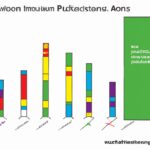The Atkinson index is an economic measure used to assess income inequality in a society. It has real-world applications in various fields, including social policy and economics research. Government policymakers can utilize this index to evaluate the effectiveness of income redistribution programs, such as welfare or taxation policies. Additionally, researchers can employ the Atkinson index to study the impact of income inequality on various societal outcomes, such as health, education, and crime rates. By understanding the extent of income inequality in a society, policymakers and researchers can work towards creating more equitable policies and interventions to promote social well-being and economic growth.
Table of Contents
- Calculation method of Atkinson index
- Definition of Atkinson index
- Income inequality measurement using Atkinson index
- Policy implications of Atkinson index.
- Poverty measurement using Atkinson index
(Atkinson Index)
The Atkinson index is a widely used measure in economics to assess income inequality within a society. It is named after British economist Tony Atkinson, who developed the formula in 1970. While the concept of income inequality might seem abstract, its real-world applications are far-reaching and impactful.
One area where the Atkinson index finds application is in policymaking. Governments often use this measure to evaluate the effectiveness of their redistributive policies. By calculating the index before and after implementing such policies, policymakers can assess whether they are effectively reducing income inequality.
Another important application of the Atkinson index is in understanding the social and economic consequences of income inequality. Higher levels of income inequality have been linked to a range of social issues, including higher rates of crime, decreased social mobility, and diminished trust in public institutions. By using the Atkinson index, researchers can quantify the extent of income inequality in a society and better understand its implications.
The Atkinson index also comes into play in international comparisons. Different countries have distinct levels of income inequality, and comparing them based solely on average incomes can be misleading. The Atkinson index provides a more comprehensive measure, taking into account the distribution of income within each country. This allows for a more accurate comparison of living standards between different nations.
In conclusion, the Atkinson index serves as a valuable tool in assessing income inequality and understanding its implications in various real-world contexts. From informing policymaking to facilitating international comparisons, this measure provides valuable insights into the distribution of income within societies, helping researchers, policymakers, and the public better comprehend the complexities of income inequality.
Calculation method of Atkinson index
The calculation method of the Atkinson index is used to measure inequality in income or wealth distribution within a society. The index takes into account both the size of the gap between the rich and the poor, and the society’s level of aversion to inequality.
To calculate the Atkinson index, three main steps are involved. First, the income or wealth distribution data needs to be gathered. This data typically includes information on the income or wealth levels of individuals or households in a particular population.
Next, the data is used to calculate the proportion of total income or wealth held by each percentile of the population. This involves dividing the population into groups based on their income or wealth levels, and then calculating the percentage of total income or wealth within each group.
Once the proportion of income or wealth held by each percentile is determined, the Atkinson index can be calculated. The index is based on the principle that individuals or households with lower incomes or wealth should be given more weight in the measurement of inequality.
The Atkinson index incorporates a parameter called the “inequality aversion parameter” which reflects a society’s preferences for equality. This parameter ranges from 0 to infinity, with higher values indicating greater aversion to inequality.
The final calculation of the Atkinson index involves summing up the weighted differences between the proportion of income or wealth held by each percentile and a reference level of equality. The reference level can be set at zero, which represents perfect equality, or at some other value depending on the context.
By using the calculation method of the Atkinson index, policymakers and researchers can gain insights into the level of inequality within a society. This information can be used to formulate policies and interventions aimed at reducing inequality and promoting a more equitable distribution of income or wealth.
Overall, the calculation method of the Atkinson index provides a robust and comprehensive way to measure inequality, taking into account both the size of the gap between the rich and the poor and society’s attitudes towards inequality. By understanding and addressing inequality, societies can work towards creating a more just and inclusive world.
Definition of Atkinson index
The Atkinson index is a measure of economic inequality that helps policymakers assess the income distribution within a population. It takes into account the unequal distribution of income by considering the preferences of individuals towards inequality. Developed by British economist Anthony Barnes Atkinson, this index provides valuable insights into the extent of income inequality and helps in formulating policies to address this issue.
The Atkinson index is defined as the arithmetic mean of the negative of the elasticity of marginal utility of income. In simpler terms, it measures how sensitive individuals are to changes in income, with a greater sensitivity resulting in a higher index value. A higher Atkinson index indicates higher income inequality within a society, while a lower index signifies a more equitable distribution of income.
The application of the Atkinson index extends to various real-world scenarios. One such application is in evaluating the impact of taxation policies on income inequality. By using the index, policymakers can determine the effectiveness of tax reforms in reducing inequality. They can analyze the distributional effects of different tax structures and make informed decisions to achieve a fairer income distribution.
Additionally, the Atkinson index can be used to assess the impact of social welfare programs on inequality. By comparing the Atkinson index before and after implementing social welfare programs, policymakers can gauge the effectiveness of these programs in reducing income disparities. This helps them identify areas that require improvement and design targeted interventions to address specific needs.
Another practical application of the Atkinson index is in analyzing the effects of economic growth on income distribution. As economies grow, there is a possibility of income disparities widening or narrowing. The Atkinson index enables policymakers to measure the extent of change in income distribution and formulate policies to ensure that the benefits of economic growth are shared more equitably.
In conclusion, the Atkinson index provides a useful tool for policymakers to quantify income inequality and assess its impact on society. By analyzing real-world applications of the Atkinson index in areas such as taxation, social welfare programs, and economic growth, policymakers can make informed decisions to promote a more equitable income distribution. Understanding and addressing income inequality are crucial steps towards building a fair and inclusive society.
Income inequality measurement using Atkinson index
Income inequality is a pressing issue in societies worldwide. One way to measure this inequality is by using the Atkinson index. The Atkinson index takes into account both the average income and the distribution of income among individuals. This makes it a valuable tool for policymakers and economists seeking to understand and address income disparities.
The Atkinson index incorporates a parameter known as the “inequality aversion parameter.” This parameter reflects society’s preference for more equal distributions of income. By adjusting the value of this parameter, policymakers can assess different scenarios and evaluate the impact of potential policy changes on income inequality.
The Atkinson index has been applied in various real-world contexts, allowing policymakers to assess the effectiveness of policies aimed at reducing income inequality. For example, it has been used to analyze the impact of taxation policies on income distribution. Policymakers can use the Atkinson index to compare the level of income inequality before and after implementing different tax systems, helping them make informed decisions.
In addition to assessing the impact of taxation, the Atkinson index can also be used to evaluate the effectiveness of social welfare programs. By comparing income inequality levels with and without these programs, policymakers can determine if they are effectively reducing inequality.
Furthermore, the Atkinson index allows policymakers to investigate the impact of economic growth on income inequality. It can help determine if economic growth is benefiting everyone in society or if it is exacerbating income disparities. This information can guide policymakers in designing policies that promote inclusive growth.
Overall, the Atkinson index provides a comprehensive and nuanced measurement of income inequality. Its ability to consider both the average income and the distribution of income ensures a more accurate representation of real-world scenarios. By utilizing the Atkinson index, policymakers and economists can gain valuable insights into the causes and consequences of income inequality and make informed decisions to address this pressing issue.
In conclusion, the Atkinson index is a powerful tool for measuring income inequality. Its real-world applications enable policymakers and economists to assess the impact of policies, taxation systems, social welfare programs, and economic growth on income distribution. By utilizing the Atkinson index, society can work towards creating a more equitable and inclusive future.
Policy implications of Atkinson index.
Policy implications of Atkinson index
The Atkinson index is a commonly used measure of income inequality that takes into account both the extent and the distribution of income within a society. It provides valuable insights into the level of inequality present and can serve as a guide for policymakers in designing effective poverty reduction strategies.
One of the key policy implications of the Atkinson index is the need for progressive taxation. Progressive taxation refers to a system where individuals with higher incomes are taxed at a higher rate than those with lower incomes. By implementing progressive tax policies, governments can redistribute wealth from the rich to the poor, thereby reducing income inequality.
Another important policy implication of the Atkinson index is the need for targeted social programs. Targeted social programs are initiatives that specifically aim to improve the well-being of the most vulnerable groups in society, such as the poor or marginalized communities. By directing resources towards these groups, policymakers can address the income disparities highlighted by the Atkinson index and promote more equitable outcomes.
Furthermore, the Atkinson index underscores the importance of investing in education and skill development. By equipping individuals with the necessary skills and knowledge, governments can promote upward mobility and reduce income inequality. Educational opportunities should be made accessible to all, regardless of socioeconomic background, to ensure equal opportunities for all members of society.
Additionally, the Atkinson index can inform policymakers on the need for labor market reforms. In many societies, income inequality is perpetuated by a lack of decent job opportunities and fair wages. Policymakers can use the Atkinson index to identify areas where labor market reforms are needed, such as ensuring fair wages, promoting worker rights, and creating a supportive environment for small businesses and entrepreneurship.
Lastly, the Atkinson index highlights the importance of making healthcare accessible and affordable for all members of society. Health disparities often contribute to income inequality, as individuals with limited access to healthcare face higher medical expenses and reduced productivity. By investing in healthcare systems and implementing universal healthcare schemes, policymakers can help reduce the burden of healthcare costs and promote better health outcomes for all.
In conclusion, the Atkinson index provides valuable insights for policymakers in addressing income inequality. By implementing progressive taxation, targeted social programs, investing in education, labor market reforms, and accessible healthcare, governments can take meaningful steps towards reducing income inequality and promoting a more equitable society for all.
Poverty measurement using Atkinson index
Poverty measurement is a crucial aspect of understanding and addressing inequality. One widely used tool for measuring poverty is the Atkinson index. developed by economist Anthony Atkinson.
The Atkinson index considers both the extent and distribution of income inequality. It takes into account the welfare of the poorest individuals in a society, thereby capturing the true impact of poverty. Unlike other poverty measures, which focus solely on income levels, the Atkinson index offers a more nuanced perspective.
Using the Atkinson index, policymakers can identify and monitor the extent of poverty within a population. This information is vital for designing targeted interventions and evaluating the effectiveness of poverty reduction strategies. By providing a comprehensive understanding of poverty, the Atkinson index enables policymakers to make informed decisions that can positively impact people’s lives.
The formula used to calculate the Atkinson index includes a parameter known as the Atkinson coefficient, which determines the level of aversion to inequality. This allows policymakers to tailor poverty measures to align with societal values. For example, a higher Atkinson coefficient signifies a greater aversion to inequality and a focus on reducing the welfare gap between the rich and the poor.
Real-world applications of the Atkinson index extend beyond policy analysis. Researchers and social scientists utilize this measurement tool to better understand the dynamics of poverty and inequality. By examining trends in the Atkinson index over time, researchers can uncover patterns and insights that may inform academic discourse and contribute to the development of more effective poverty reduction strategies.
Furthermore, the Atkinson index can provide a comparative analysis of poverty across different regions or countries. This allows for benchmarking and learning from successful poverty reduction efforts. By identifying best practices, policymakers can replicate successful interventions and adapt them to suit local contexts, ultimately promoting more equitable societies.
Overall, the Atkinson index offers a powerful tool for measuring poverty and inequality, guiding policy decisions, and fostering a greater understanding of societal well-being. Its real-world applications demonstrate the potential it holds in driving positive change and promoting a more just and inclusive world. By incorporating the Atkinson index into poverty measurement efforts, we can take meaningful steps towards eradicating poverty and building a more equitable future for all.
External Links
- The 3 R’s of Glycemic Index: Recommendations, Research, and the …
- Building inclusive products through A/B testing | LinkedIn Engineering
- Machine Learning: Algorithms, Real-World Applications and …
- High Performance PostgreSQL for Rails: Reliable, Scalable …
- Ensembles of multiple spectral water indices for improving surface …













